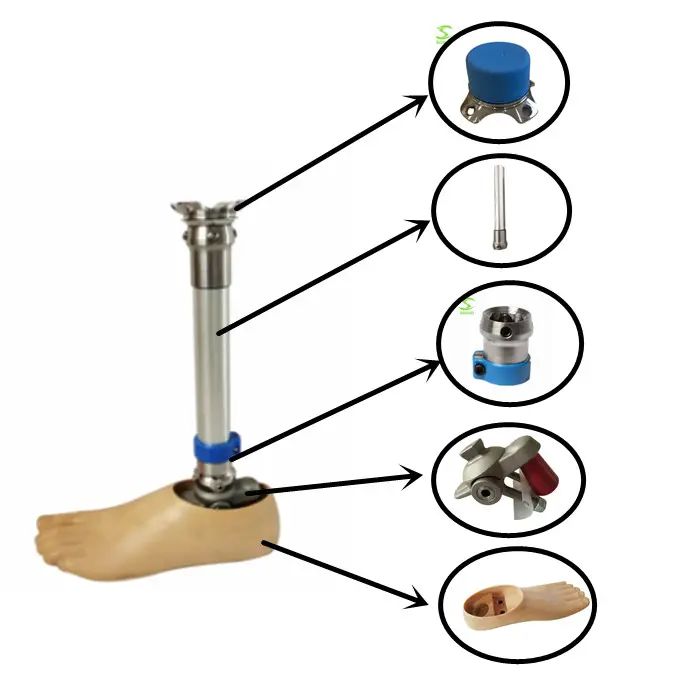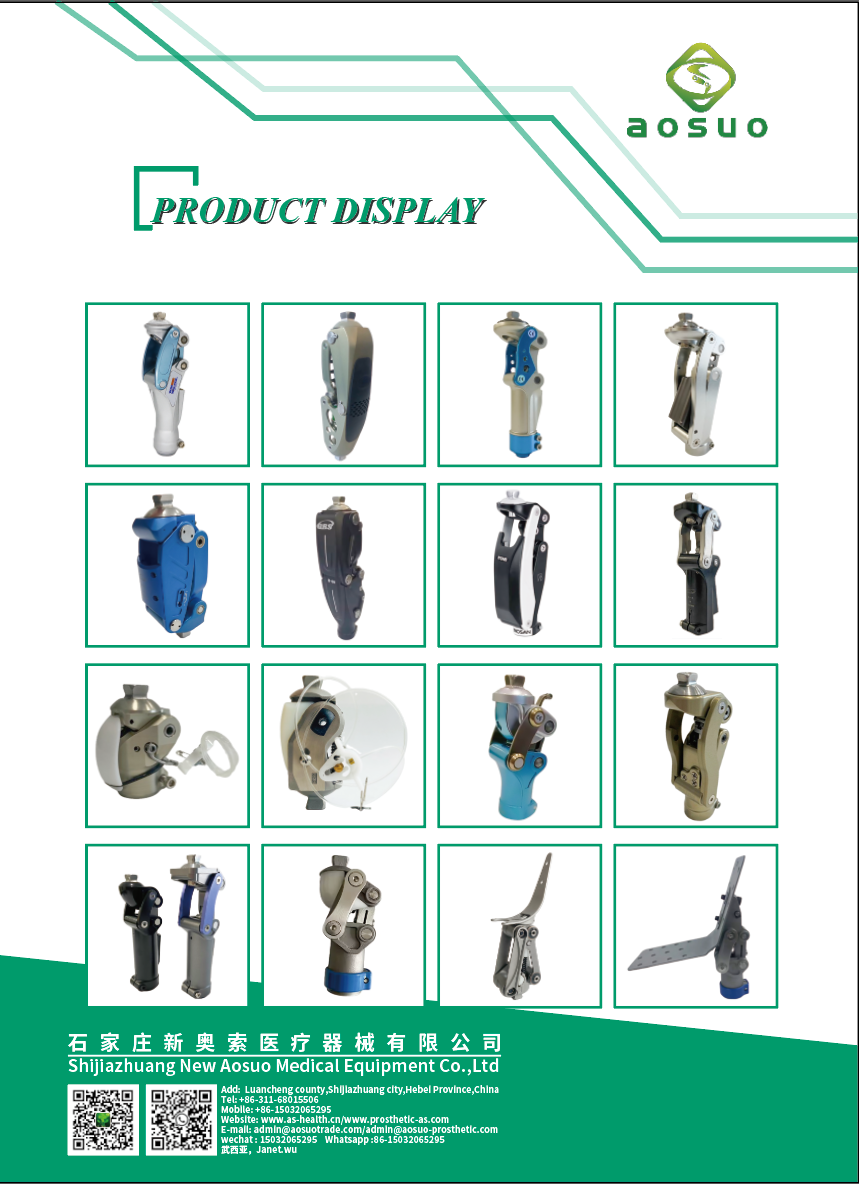What to Expect During Fitting for Prosthetic Leg Parts: A Comprehensive Guide
Release Time:
Jul 20,2025
What to Expect During Fitting for Prosthetic Leg Parts Fitting for prosthetic leg parts is a crucial step in the rehabilitation journey for individuals who have undergone limb loss. Understanding what to expect can ease anxiety and help you prepare for this transformative experience. In this guide, we will discuss the fitting process in detail, covering everything from initial assessments to adjus
What to Expect During Fitting for Prosthetic Leg Parts
Fitting for prosthetic leg parts is a crucial step in the rehabilitation journey for individuals who have undergone limb loss. Understanding what to expect can ease anxiety and help you prepare for this transformative experience. In this guide, we will discuss the fitting process in detail, covering everything from initial assessments to adjustments post-fitting.
The Importance of Proper Fitting for Prosthetic Legs
A well-fitted prosthetic leg can significantly enhance mobility and comfort. An improper fit can lead to discomfort, skin irritation, and even structural failures of the prosthesis. Therefore, the fitting process is designed not only to ensure the prosthetic leg fits correctly but also to accommodate the unique needs of each individual.
Understanding the Fitting Process
The fitting process typically begins shortly after the amputation site has healed. A series of assessments will be conducted by a prosthetist, who specializes in creating and fitting prosthetic limbs. Here’s what you can generally expect during this crucial time.
Initial Assessment: Understanding Your Needs
During your first appointment, the prosthetist will conduct a thorough assessment of your health, lifestyle, and specific mobility needs. Questions may include:
- What activities do you wish to engage in post-fitting?
- Do you have any previous experience with prosthetics?
- Are there any specific concerns or conditions to consider?
This information helps the prosthetist recommend the most suitable prosthetic options tailored to your lifestyle.
Measuring for a Custom Fit
Once your needs are understood, the prosthetist will take precise measurements of your residual limb. This step is crucial for creating a prosthetic that aligns perfectly with your anatomy. Measurements will typically include:
- Circumference of the residual limb
- Length of the limb
- Contours and shape
Using this data, the prosthetist can create a prosthetic socket that will provide optimal comfort and support.
Choosing the Right Prosthetic Components
The fitting process involves selecting various components of the prosthetic leg that cater to your lifestyle and mobility needs. Key components include:
1. Prosthetic Socket
The socket is the critical part of the prosthetic leg that interfaces with the residual limb. A well-designed socket will distribute pressure evenly and minimize skin irritation. Your prosthetist may create a test socket for initial fitting before finalizing the design.
2. Knee Joint
For above-knee prosthetics, selecting the appropriate knee joint is essential. Options range from basic mechanical joints to more advanced microprocessor-controlled versions that adapt to walking conditions.
3. Foot and Ankle Component
The foot and ankle assembly plays a vital role in stability and balance. Choices can range from flexible feet designed for daily activities to specialized options for sports.
The Fitting Appointment: What to Expect
On the day of the fitting, expect a detailed and thorough process. Here’s how the appointment generally unfolds:
1. Evaluation of the Test Socket
If a test socket was created, you'll first try it on. The prosthetist will assess how well it fits and make adjustments as necessary. It's crucial to communicate any discomfort you feel during this process.
2. Testing Mobility
Once the test socket is adjusted, you will begin testing your mobility. This may involve walking with the prosthesis and trying various movements. The prosthetist will observe your gait and make real-time adjustments to enhance your comfort and mobility.
3. Final Adjustments
After the mobility testing, final adjustments will be made to ensure an optimal fit. This may involve reshaping the socket or adjusting the alignment of the knee and foot components.
Post-Fitting Care and Adjustments
After the fitting, you will likely have follow-up appointments to ensure the prosthetic limb is functioning correctly and comfortably. Here's what to expect:
1. Regular Follow-Up Appointments
Follow-up visits are crucial for assessing the fit and making necessary adjustments. Your body may change over time, affecting how the prosthetic fits. Regular check-ins will help address any issues early on.
2. Skin Care and Maintenance
Proper skin care around the socket area is essential. You'll receive guidelines on how to care for your skin and the prosthesis to prevent irritation and infections.
Common Challenges During Fitting
While the fitting process can be rewarding, some challenges may arise. Understanding these can help you prepare:
1. Discomfort and Pain
Initially, discomfort may occur as you adjust to wearing a prosthetic. Being proactive about communicating any pain to your prosthetist can help facilitate timely solutions.
2. Emotional Adjustment
The transition to a prosthetic limb can be emotionally challenging. Engaging with support groups or mental health professionals can be beneficial during this phase.
FAQs About Prosthetic Leg Fitting
**1. How long does the fitting process take?**
The initial fitting process can take several hours, but multiple appointments may be necessary for adjustments.
**2. Are prosthetic fittings painful?**
While some discomfort is normal, the fitting process should not be painfully uncomfortable. Communicate any pain to your prosthetist.
**3. How often will I need follow-up appointments?**
Follow-up appointments are typically scheduled every few weeks initially, depending on your individual needs.
**4. Can I engage in sports after getting a prosthetic leg?**
Yes, many prosthetics are designed for athletic activities. Discuss your goals with your prosthetist to explore specialized options.
**5. What if my residual limb changes size?**
It’s common for the residual limb to change over time, especially in the months following amputation. Regular follow-ups will help address any necessary adjustments.
Conclusion
Fitting for prosthetic leg parts is a pivotal experience that marks the beginning of a new chapter in regaining mobility and independence. By understanding the process, the components involved, and what to expect during fittings, individuals can approach this journey with confidence. Preparation, communication with your prosthetist, and a willingness to adapt are key to ensuring a successful fitting and a smooth transition to life with a prosthetic limb. With the right support and fitting, many individuals find a renewed sense of freedom and capability, paving the way for an active lifestyle.
Keywords:
You Can Also Learn More About Industry Trends







